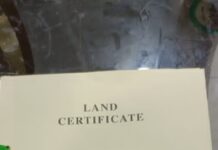Ghana has taking part in the celebration of World Wetlands Day with the focus of tackling the growing freshwater crisis that threatens people and the planet.
A statement issued by the environmental NGO, A Rocha Ghana, in commemoration of the day mentioned some of the key threats to Ghana’s Wetlands to include Forest loss, illegal mining (Galamsey), indiscriminate dumping of waste, wetlands conversion into other land use forms and pollution from industrial waste.
“We are facing a growing freshwater crisis that threatens people and our planet. We use more freshwater than nature can replenish, and we are destroying the ecosystem that water and all life depend on most – Wetlands”, the statement said.
The World Wetlands Day, 2021 therefore anchored on the theme, “Wetlands and Water”— throwing a spotlight on wetlands as a source of freshwater and encouraging actions to restore them and stop their loss.
“The 2021 campaign highlights the contribution of wetlands to the quantity and quality of freshwater on our planet. Water and wetlands are connected in an inseparable co-existence that is vital to life, our wellbeing and the health of our planet”, it added.
The history behind Wetlands
Wetlands are land areas that are saturated or flooded with water either permanently or seasonally. Inland wetlands include marshes, ponds, lakes, fens, rivers, floodplains, and swamps. Coastal wetlands include saltwater marshes, estuaries, mangroves, lagoons and even coral reefs. Fishponds, rice paddies, and saltpans are human-made wetlands.
On the 2nd of February every year, the World Wetlands Day is commemorated.
This day marks the date of the adoption of the Convention on Wetlands on 2 February 1971, in the Iranian city of Ramsar on the shores of the Caspian Sea, thus it has been 50 years since this pact was signed. In the past, wetlands were virtually considered as “waste lands” or areas that only served for breeding mosquitoes. As such, they were dredged to facilitate drainage of the water, reclaimed for other uses, or simply considered as dumping grounds for all types of refuse.
Wetlands resources, such as fish, reeds, mangroves and thatch materials were harvested indiscriminately without any attempt to regulate their exploitation. However, since 1971, when the Convention on Wetlands of International Importance (Ramsar Convention, 1971) came into force, wetlands have been internationally recognised as ecosystems of considerable importance, comparable to our forests, rangelands and marine ecosystems.
Ghana has been a signatory to the Ramsar Convention, an international treaty focusing on the conservation of wetlands of international importance, since 1988 and in June 1999 the Ministry of Lands and Forestry launched the National Land Policy to further recognise wetlands as environmental conservation areas.
Ghana’s Wetland Resources
According to the statement from A Rocha Ghana, Wetland ecosystems in Ghana constitute about 10 per cent of the country’s total land surface.
“Based on the criteria of the Ramsar Convention, three main types of wetlands are identified in Ghana and these are Marine/Coastal Wetlands, Inland Wetlands and Man-Made Wetlands”.
“Under these categories are a countless number of wetlands spread across the country’s topography however, there are a few that have been set aside for conservation because of their international importance according to set criteria and managed to provide maximum benefits to the local communities living within and around the area”, the statement added.
These wetlands, the statement said, have therefore been tagged, “Ramsar Sites” with five designated coastal wetlands in Ghana, namely Keta Lagoon Complex, Songhor, Sakumo, Densu Delta and Muni Lagoon.
Ghenvironment.org













































